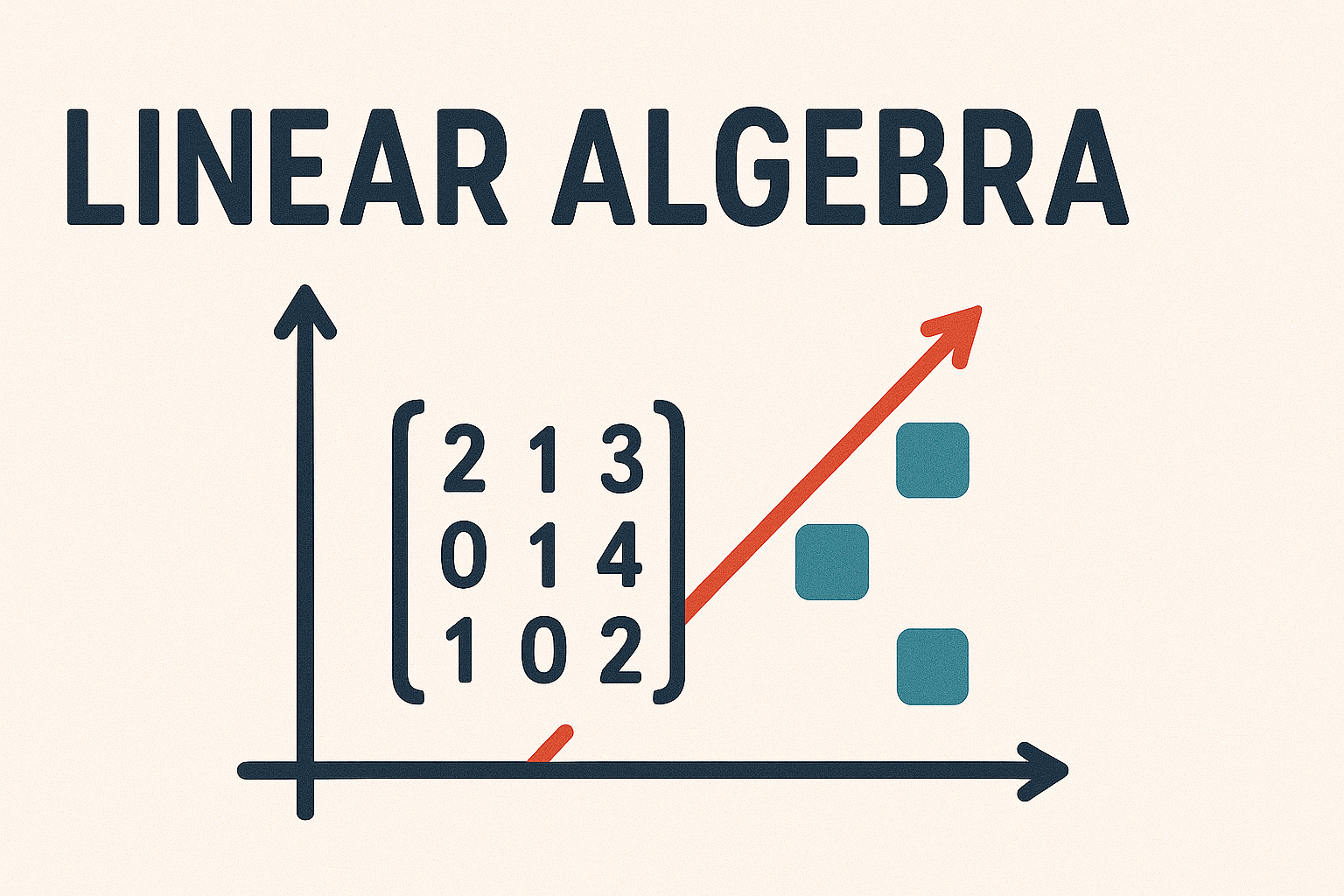Vectors Exercise Solutions#
Solution to Exercise 3.1
(a) \(2\mathbf{u} + \mathbf{w} = 2\begin{pmatrix} 2 \\ 3 \end{pmatrix} + \begin{pmatrix} 1 \\ 6 \end{pmatrix} = \begin{pmatrix} 4 \\ 6 \end{pmatrix} + \begin{pmatrix} 1 \\ 6 \end{pmatrix} = \begin{pmatrix} 5 \\ 12 \end{pmatrix}\)
(b) \(\mathbf{w} - \mathbf{u} = \begin{pmatrix} 1 \\ 6 \end{pmatrix} - \begin{pmatrix} 2 \\ 3 \end{pmatrix} = \begin{pmatrix} 1 - 2 \\ 6 - 3 \end{pmatrix} = \begin{pmatrix} -1 \\ 3 \end{pmatrix}\)
(c) \(\hat{\mathbf{u}} = \dfrac{\mathbf{u}}{\|\mathbf{u}\|} = \dfrac{1}{\sqrt{13}} \begin{pmatrix} 2 \\ 3 \end{pmatrix} = \begin{pmatrix} \frac{2}{\sqrt{13}} \\ \frac{3}{\sqrt{13}} \end{pmatrix}\)
(d) \(-\hat{\mathbf{v}} = -\dfrac{\mathbf{v}}{\|\mathbf{v}\|} = -\dfrac{1}{\sqrt{13}} \begin{pmatrix} 3 \\ -2 \end{pmatrix} = \begin{pmatrix} -\frac{3}{\sqrt{13}} \\ \frac{2}{\sqrt{13}} \end{pmatrix}\)
(e) \(\dfrac{1}{2}\mathbf{v} = \dfrac{1}{2} \begin{pmatrix} 3 \\ -2 \end{pmatrix} = \begin{pmatrix} 3 / 2 \\ -2 / 2 \end{pmatrix}\)
(f) \(\mathbf{v} - \mathbf{u} = \begin{pmatrix} 3 \\ -2 \end{pmatrix} - \begin{pmatrix} 2 \\ 3 \end{pmatrix}= \begin{pmatrix} 1 \\ -5 \end{pmatrix}\)
(g) \(\mathbf{w} - \mathbf{u} = \begin{pmatrix} 1 \\ 6 \end{pmatrix} - \begin{pmatrix} 2 \\ 3 \end{pmatrix} = \begin{pmatrix} -1 \\ 3 \end{pmatrix}\)
(h) \(\mathbf{u} \cdot \mathbf{w} = \begin{pmatrix} 2 \\ 3 \end{pmatrix} \cdot \begin{pmatrix} 1 \\ 6 \end{pmatrix} = 2 \times 1 + 3 \times 6 = 20\)
(i) Using equation (3.4)
(j) \(\mathbf{u} \cdot \mathbf{v} = \begin{pmatrix} 2 \\ 3 \end{pmatrix} \cdot \begin{pmatrix} 3 \\ -2 \end{pmatrix} = 2 \times 3 + 3 \times (-2) = 0\)
(k) \(\mathbf{v} \times \mathbf{w} = \begin{vmatrix} \mathbf{i} & \mathbf{j} & \mathbf{k} \\ 3 & -2 & 0 \\ 1 & 6 & 0 \end{vmatrix} = 0\mathbf{i} - 0 \mathbf{j} + 20 \mathbf{k} = \begin{pmatrix} 0 \\ 0 \\ 20 \end{pmatrix}\)
Solution to Exercise 3.2
(a) \(\mathbf{u} = 2 \begin{pmatrix} 1 \\ 0 \\ 0 \end{pmatrix} + 7 \begin{pmatrix} 0 \\ 1 \\ 0 \end{pmatrix} + \begin{pmatrix} 0 \\ 0 \\ 1 \end{pmatrix} = 2 \mathbf{i} + 7 \mathbf{j} + \mathbf{k}\)
(b)
Therefore \(\mathbf{u} = 3 \mathbf{f}_1 + 5 \mathbf{f}_2 - \mathbf{f}_3\).
Solution to Exercise 3.3
(a) If \(\mathbf{u}\) and \(\mathbf{v}\) are perpendicular then \(\mathbf{u} \cdot \mathbf{v} = 0\).
(b)
Solution to Exercise 3.4
Therefore \(\mathbf{u} \perp \mathbf{v}\). The angle between \(\mathbf{u}\) and \(\mathbf{w}\) is
and the angle between \(\mathbf{v}\) and \(\mathbf{w}\) is
